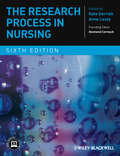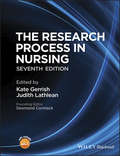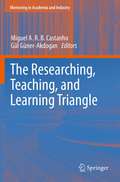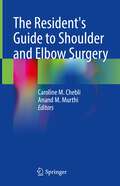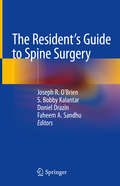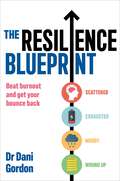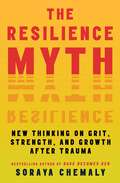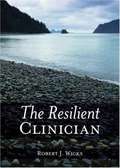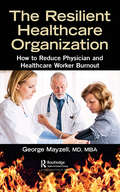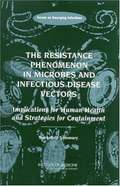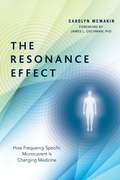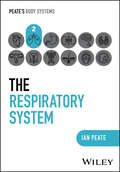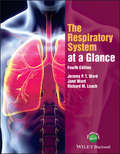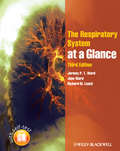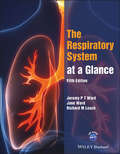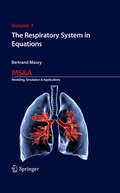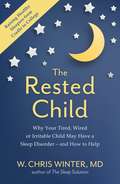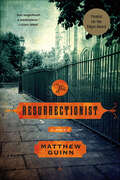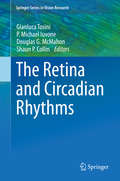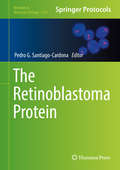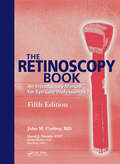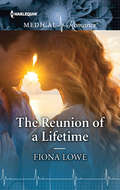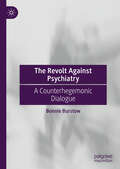- Table View
- List View
The Research Process in Nursing
by Anne Lacey Kate Gerrish'The perfect text for any health care professional who wishes to gain a sound understanding of research...This text succeeds where others fail in terms of the thoroughness of the research process and the accessible style in which the material is presented. In an age when nursing and health care research is going from strength to strength this book offers those in the world of academia and practice an excellent and essential 'bible' that is a must on any bookshelf'Dr Aisha Holloway, Lecturer Adult Health, Division of Nursing, The University of Nottingham'a book that helps you each step of the way. A very understandable and enjoyable publication'Accident and Emergency Nursing Journal 'key reference resource that students of research can use at various levels of study. It is comprehensive, user friendly and very easy to read and make sense of'Gillian E Lang, Amazon reviewerThe sixth edition of this book reflects significant developments in nursing research in recent years, ensuring the reader is provided with the very latest information on research processes and methods. It continues to explore how to undertake research as well as evaluating and using research findings in clinical practice, in a way that is suitable for both novice researchers and those with more experience.Divided into six sections, the chapters are ordered in a logical fashion that also allows the reader to dip in and out. The first two sections of the book provide a comprehensive background to research in nursing. The third section presents a variety of qualitative and quantitative approaches, both new and well-established. The final three sections then look at collecting and making sense of the resulting data and putting the research findings into clinical practice.Summarises key points at the start of each chapter to guide you throughIncludes contributions from a wide range of experts in the fieldAccessible but doesn't shrink away from complex debates and technical issuesNew to this edition:Accompanying website (www.wiley.com/go/gerrish)Ten completely new chapters including Narrative Research, Mixed Methods and Using Research in Clinical Practice'Research Example' boxes from a wide variety of research types
The Research Process in Nursing
by Kate Gerrish Judith LathleanComprehensive and thorough in scope, The Research Process in Nursing 7th edition provides everything you could want to know about research methods. This established textbook reflects the significant advances in nursing research and the importance of evidence-based practice, and provides an invaluable resource for both the novice and the more experienced researcher. It includes practical information and advice on: How to find and critique the evidence How to choose the right approach How to collect data How to make sense of the data How to put research into practice Special features: A clear, explicit and easy to understand text which links theory with practical steps in the research process. Examples provided allow the reader to apply a variety of research concepts to theoretical learning and professional practice. Incorporates chapters, research examples, and policy from a range of international countries, including Canada, Australia, USA and Hong Kong. Provides detailed discussions around each example, which clearly link theory with practice Easy to read for novice researchers and undergraduate nursing students, but at the same time provides sufficient depth and detail to be of value to experienced researchers and practitioners.
The Researching, Teaching, and Learning Triangle
by Gul Guner Miguel A. CastanhoIt is impossible not to ask ourselves how to cope with the role and impact of scientific research in teaching and learning. The researching, teaching and learning triangle explores a growing trend among top universities across the world to focus attention on the quality of post-graduate education and the success of the educators, using pioneering examples, ranging from classroom-level initiatives to university-wide projects. This book will be of interest to all scientists, from the budding beginner to the seasoned supervisor.
The Resident's Guide to Shoulder and Elbow Surgery
by Anand M. Murthi Caroline M. ChebliUtilizing a practical, high-yield presentation, this textbook is a comprehensive review of the most common shoulder and elbow diagnoses and management strategies. It allows easy access to pertinent information for residents and fellows while preparing for rounds, the clinic and the operating room and also aides residents studying for their yearly in-training exam (OITE). Each topic is organized in a consistent, bulleted format so that the information flows in a logic manner: history, physical examination, imaging (when and what to order), and the most appropriate treatment algorithm. The most common classification systems are emphasized and illustrated, and treatment algorithms are further organized into non-operative and operative and include surgical approaches as well as the risks and complications of surgical intervention. The shoulder and elbow are covered in their own exclusive sections, with each chapter discussing the unique diagnostic considerations for each anatomic structure and the types of injuries to expect. Topics in the shoulder section include osteoarthritis, rotator cuff arthropathy and tears, instability, stiffness, SLAP tears and biceps tendinitis, and fractures of the clavicle and scapula. Topics in the elbow section include biceps and triceps rupture, lateral and medical epicondylitis, instability and stiffness, and elbow fractures - distal humerus, Monteggia, the terrible triad and more. Case material, key points and takeaways, and question-and-answer elements are included to enhance the text's overall utility. There is currently no textbook on the shoulder and elbow tailored specifically for orthopedic residents, fellows and senior medical students. The Resident's Guide to Shoulder and Elbow Surgery therefore provides a much-needed resource for early-career clinicians and surgeons.
The Resident's Guide to Spine Surgery
by Joseph R. O’Brien S. Bobby Kalantar Doniel Drazin Faheem A. SandhuWith an emphasis on set-up and execution and lessons learned from expert practitioners, this concise, practical guide for residents and fellows presents the essentials for both common and complex spine surgery. Proceeding anatomically from the cervical to the sacroiliac, and including chapters on spinal tumors, infection and revision surgery, nearly 40 different procedures are highlighted, from corpectomy, arthroplasty and laminectomy to percutaneous screws, decompression and fusion. Chapters include all the information a resident will need to know: indications and contraindications, imaging and diagnosis, OR set-up and instrumentation selection, the specific operative technique, post-operative protocols, and clinical pearls and pitfalls. Radiographs and full-color intraoperative photographs accompany each procedure. Whether suturing dura or performing a lateral interbody fusion, spinal surgery is a technical pursuit, and having a firm grasp of the details can ultimately determine the procedure's success. Written and edited by veterans in orthopedic surgery and neurosurgery, The Resident's Guide to Spine Surgery is just the detailed, user-friendly resource for up-and-coming clinicians looking to develop and expand their surgical expertise.
The Resilience Blueprint: Beat burnout and get your bounce back
by Dr Dani GordonYou're never too unhealthy, too tired or too late to become the most dynamic, energetic and resilient version of yourselfWe'd all like to be able to bounce back from life's inevitable setbacks, whether those are health issues or emotional challenges. And perhaps we're resilient in one area, such as never catching colds, but not in another, such as we're constantly feeling overwhelmed and anxious. That's because each of us has a resilience type, and if you're not aware of yours, all of your efforts to be healthy may be failing to make a difference. Even the most up to date health advice may not be right for you if it's wrong for your type.Find out if you're a highly strung WOUND-UP WARRIOR, an emotional MOODY WARRIOR, a drained EXHAUSTED WARRIOR, or an easily distracted SCATTERED WARRIOR. Integrative functional medicine doctor Dani Gordon will guide you to identify your personal resilience type, and then offer all the scientifically backed health advice you need to put her transformative 8-week resilience programme into action.This empowering and compassionate guide gives you not just the tools, but the confidence to change your life.
The Resilience Myth: New Thinking on Grit, Strength, and Growth After Trauma
by Soraya ChemalyThe author of the &“must-read&” (NPR) Rage Becomes Her presents a powerful manifesto for communal resilience based on in-depth investigations into history, social science, and psychology.We are often urged to rely only on ourselves for strength, mental fortitude, and positivity. But with her distinctive &“skill, wit, and sharp insight&” (Laura Bates, author of Girl Up), Soraya Chemaly challenges us to adapt our thinking about how we survive in a world of sustained, overlapping crises. It is interdependence and nurturing relationships that truly sustain us, she argues. Based on comprehensive research and eye-opening examples from real-life, The Resilience Myth offers alternative visions of relational hardiness by emphasizing care for others and our environments above all.
The Resilient Clinician
by Robert J. WicksThis immensely readable book also includes one of the most current selective bibliographies of relevant research and clinical and theoretical publications in the subject area, from common stressors and vicarious post-traumatic stress disorders to burnout and compassion fatigue.
The Resilient Healthcare Organization: How to Reduce Physician and Healthcare Worker Burnout
by George Mayzell, MD, MBAProfessional burnout is an epidemic in America. Approximately half of physicians and nurses are affected and at risk for themselves and their patients. Much has been written about professional burnout. The term was originally coined in the 1970s by American psychologist Herbert Freudenberger to describe the consequences of severe stress and high ideals experienced by people working in "helping" professions. Since then, many books have been written to address this looming national public health crisis. But, unfortunately, there has been much less written from a solution standpoint: getting to the root cause of why this is occurring now more than ever. The Resilient Healthcare Organization engages readers focusing on physicians and healthcare professionals and their experiences and how they overcame a loss of enthusiasm for work, feelings of cynicism, and a low sense of personal accomplishment. The feelings of emotional exhaustion are characterized by depersonalization and perceived ineffectiveness. These are the cardinal features that define "burnout" and affect almost 50% of physicians and 30–70% of nurses. This book addresses why burnout is viewed as a threat and how it can be fought. The author discusses the contributing factors and solutions at the health system and societal level. Additionally, this book explores the current and future etiology and impacts on physicians and healthcare professionals, with a significant emphasis on solutions at both the individual level and the system level. Contributors: Patricia S. Normand MD, Bruce Flareau, MD, Kathleen Ferket, MSN, APRN, Daniel Edelman, DO, and Peter B. Angood, MD.
The Resistance Phenomenon in Microbes and Infectious Disease Vectors: Implications for Human Health and Strategies for Containment
by Forum on Emerging InfectionsThe resistance topic is timely given current events. The emergence of mysterious new diseases, such as SARS, and the looming threat of bioterrorist attacks remind us of how vulnerable we can be to infectious agents. With advances in medical technologies, we have tamed many former microbial foes, yet with few new antimicrobial agents and vaccines in the pipeline, and rapidly increasing drug resistance among infectious microbes, we teeter on the brink of loosing the upperhand in our ongoing struggle against these foes, old and new. "The Resistance Phenomenon in Microbes and Infectious Disease Vectors examines our understanding of the relationships among microbes, disease vectors, and human hosts, and explores possible new strategies for meeting the challenge of resistance.
The Resonance Effect: How Frequency Specific Microcurrent Is Changing Medicine
by Carolyn Mcmakin James L. OschmanThe Resonance Effect is both the author's story of her inspirational journey of having the courage to find her true calling and an account of the development of a remarkable newly rediscovered treatment, frequency specific microcurrent (FSM), that takes advantage of the body's ability to respond to frequencies in order to heal a number of chronic conditions. Carolyn McMakin, a chiropractor specializing in fibromyalgia and myofascial pain, describes her experience using a two-channel microcurrent device that has achieved astounding results that have changed medicine and created new possibilities for suffering patients over the past twenty years. Nerve pain, fibromyalgia, diabetic neuropathies, muscle pain, athletic performance, injury repair, joint pain, low back pain, neck pain, kidney stone pain, the kidney stones themselves, liver disease, diabetic wounds, brain and spinal cord injuries, PTSD, depression, shingles, asthma, ovarian cysts, abdominal adhesions, and scarring all respond to specific frequencies. McMakin explains that results are predictable, reproducible, and teachable—all without side effects—offering hope and healing to millions of people.McMakin tells the story of how thousands of patients with conditions that did not respond to other medical therapies recovered from pain and disability through the non-invasive treatment that she developed. For example, asthma resolves with specific frequencies that remove inflammation, allergy reaction, and spasm from the bronchi. One frequency combination eliminates shingles pain in minutes and stops the shingles attack with a single three-hour treatment. Since 2005, a series of frequencies has been used to treat hundreds of PTSD patients. Post-surgical patients use FSM to reduce pain, prevent bruising, and increase healing. NFL, NHL, and Olympic athletes use it to heal injuries and improve performance. McMakin includes case histories that illustrate the efficacy of the treatment and shares the specific frequencies that each condition requires so that patients direct their own treatments.
The Respiratory System (Peate's Body Systems)
by Ian PeatePEATE’S BODY SYSTEMS THE RESPIRATORY SYSTEM A CONCISE, ILLUSTRATED, AND ACCESSIBLE GUIDE TO THE RESPIRATORY SYSTEM Each of the twelve volumes in Peate’s Body Systems series is rooted in the belief that a deep and thorough understanding of the human body is essential for providing the highest standard of care. Offering clear, accessible and up-to-date information on different body systems, this series bridges the gap between complex scientific concepts and practical, everyday applications in health and care settings. This series makes for an invaluable resource for those committed to understanding the intricacies of human biology, physiology and the various systems that sustain life. The Respiratory System is the perfect companion for students and newly registered practitioners across nursing and allied health fields with an interest in respiratory care, providing a comprehensive yet easy-to-digest guide for both academic and clinical application. Equips healthcare students and practitioners with the necessary information to provide safe and competent careFeatures colourful illustrations to aid comprehension, clarify complicated concepts, and render content more engaging and accessibleEmpowers readers to adapt to a rapidly evolving healthcare landscape, preparing them for the future of healthcare deliveryContains information necessary for effective patient care of those with Chronic Obstructive Pulmonary Disease (COPD), asthma, lung cancer and other respiratory diseases and conditions
The Respiratory System at a Glance
by Jeremy P. Ward Jane Ward Richard M. LeachFollowing the familiar, easy to use at a Glance format, and now in full-colour, The Respiratory System at a Glance is an accessible introduction and revision text for medical students.<P><P> Reflecting changes to the content and assessment methods used in medical education and published clinical recommendations, this at a Glance provides a user-friendly overview of the respiratory system to encapsulate all that the student needs to know. This new edition of The Respiratory System at a Glance: Integrates both basic and clinical science - ideal for systems-based courses Includes both the pathophysiology and clinical aspects of the respiratory system Features more case studies, updated and colour figures, and new chapters on the epidemiology of respiratory disease, public health issues, and Sarcoidosis Includes self-assessment questions and answers and an appendix of tables of standard values Provides a simple 'one-stop' easy to use course and revision text
The Respiratory System at a Glance (At a Glance #41)
by Jeremy P. Ward Jane Ward Richard M. LeachFollowing the familiar, easy to use at a Glance format, and now in full-colour, The Respiratory System at a Glance is an accessible introduction and revision text for medical students. Reflecting changes to the content and assessment methods used in medical education and published clinical recommendations, this at a Glance provides a user-friendly overview of the respiratory system to encapsulate all that the student needs to know. This new edition of The Respiratory System at a Glance: Integrates both basic and clinical science - ideal for systems-based courses Includes both the pathophysiology and clinical aspects of the respiratory system Features more case studies, updated and colour figures, and new chapters on the epidemiology of respiratory disease, public health issues, and Sarcoidosis Includes self-assessment questions and answers and an appendix of tables of standard values Provides a simple 'one-stop' easy to use course and revision text
The Respiratory System at a Glance (At a Glance)
by Jeremy P. Ward Jane Ward Richard M. LeachThe Respiratory System at a Glance The market-leading at a Glance series is popular among healthcare students and newly qualified practitioners for its concise, simple approach and excellent illustrations. Each bite-sized chapter is covered in a double-page spread with clear, easy-to-follow diagrams, supported by succinct explanatory text. Covering a wide range of topics, books in the at a Glance series are ideal as introductory texts for teaching, learning and revision, and are useful throughout university and beyond. Everything you need to know about The Respiratory System… at a Glance! Highly-illustrated overview of the structure and function of the lungs and airways, with sections on history, examination, pathophysiology, treatment and management Respiratory System at a Glance is a comprehensive guide to normal lung structure and function and associated pathophysiology, featuring key information on all major respiratory disorders. As per the familiar, easy-to-use ‘at a Glance’ format, each topic is presented as a double-page spread, with key facts accompanied by clear diagrams that encapsulate essential knowledge. This ‘one-stop’ resource has been revised and updated for this 5thedition to include recent advances in our understanding and/or treatment of asthma, COPD, pulmonary vasculitis, sarcoidosis, cystic fibrosis, respiratory infections (including COVID-19), and the most recent national clinical management guidelines. The accompanying website includes self-assessment case studies, flashcards and MCQs to support learning or for review. Respiratory System at a Glance also provides information on: Structure and function of the respiratory system, the thoracic cage and respiratory muscles, gas laws, diffusion, and elastic forces Acid-base balance and disorders, control of breathing through chemical and neural mechanisms, and pulmonary circulation and ventilation-perfusion matching Exercise, altitude, and diving, complications of development and congenital disease, lung defense mechanisms, and immunology of the lungs Public health and smoking, respiratory failure, and the pathophysiology and management of asthma, chronic obstructive pulmonary disease and other respiratory disorders With accompanying self-assessment clinical cases and multiple-choice questions, The Respiratory System at a Glance is the ideal companion for anyone about to start a respiratory module or rotation, and will appeal to medical students and junior doctors, as well as nurses, dentists, physiotherapists, technicians, and biomedical scientists. For more information on the complete range of Wiley nursing and health publishing, please visit: www.wiley.com To receive automatic updates on Wiley books and journals, join our email list. Sign up today at www.wiley.com/email All content reviewed by students for students Wiley Medical Education books are designed exactly for their intended audience. All of our books are developed in collaboration with students. This means that our books are always published with you, the student, in mind. If you would like to be one of our student reviewers, go to www.reviewmedicalbooks.com to find out more. This new edition is also available as an e-book. For more details, please see www.wiley.com
The Respiratory System in Equations
by Bertrand MauryThis book proposes an introduction to the mathematical modeling of the respiratory system. A detailed introduction on the physiological aspects makes it accessible to a large audience without any prior knowledge on the lung. Different levels of description are proposed, from the lumped models with a small number of parameters (Ordinary Differential Equations), up to infinite dimensional models based on Partial Differential Equations. Besides these two types of differential equations, two chapters are dedicated to resistive networks, and to the way they can be used to investigate the dependence of the resistance of the lung upon geometrical characteristics. The theoretical analysis of the various models is provided, together with state-of-the-art techniques to compute approximate solutions, allowing comparisons with experimental measurements. The book contains several exercises, most of which are accessible to advanced undergraduate students.
The Rested Child: Why Your Tired, Wired, or Irritable Child May Have a Sleep Disorder - and How to Help
by W. Christopher WinterSleep disorders in children are on the rise. Experts have pronounced sleeplessness a 'hidden health crisis' for young people, with 10 percent of children presenting with diagnosable sleep disorders - but well over half are misdiagnosed. Every year, tens of thousands of children are treated for diseases such as diabetes, learning disorders, or chronic pain, when the real root cause of their ailment may actually be a sleep disorder for which they're not being treated.In this ground-breaking guide, neurologist and sleep expert Dr Chris Winter identifies the signs and symptoms of the most common sleep disorders affecting children today, and he empowers parents and caregivers to understand the steps necessary to address and treat their children's sleep problems. From common issues such as too much screen time and night terrors, to narcolepsy, sleep apnoea, and more, The Rested Child leaves no stone unturned. This book pulls back the curtain on the relationship between poor sleep quality and paediatric epidemics related to psychiatric health, rising obesity, ADD/ADHD, pain disorders, and other undiagnosed disorders of sleepiness and fatigue.Finally parents have a resource to help them uncover the root of their children's problems, and, more important, to provide the answers on how to help.
The Resurrectionist: A Novel
by Matthew Guinn"A fine gothic novel…Be warned: Corpses abound." —Washington PostAt South Carolina Medical College, Dr. Jacob Thacker is on probation for Xanax abuse. His interim career—working university public relations—takes an unnerving detour into the past when the bones of African American slaves are unearthed on campus.In a parallel narrative set in the nineteenth century, Nemo ("no man"), a university slave purchased for his unusual knife skills, becomes an unacknowledged member of the surgical faculty by day—and by night, a "resurrectionist," responsible for procuring bodies for medical study. An unforgettable character, by turns apparently insouciant, tormented, and brilliant, Nemo will seize his self-respect in ways no reader can anticipate.With exceptional storytelling pacing and skill, Matthew Guinn weaves together past and present to relate a Southern Gothic tale of shocking crimes and exquisite revenge.A 2014 Edgar Award Finalist for Best First Novel.
The Retina and Circadian Rhythms
by Gianluca Tosini P. Michael Iuvone Douglas G. Mcmahon Shaun P. CollinDaily rhythms are a ubiquitous feature of living systems. Generally, these rhythms are not just passive consequences of cyclic fluctuations in the environment, but instead originate within the organism. In mammals, including humans, the master pacemaker controlling 24-hour rhythms is localized in the suprachiasmatic nuclei of the hypothalamus (SCN). This circadian clock is responsible for the temporal organization of a wide variety of functions, ranging from sleep and food intake, to physiological measures such as body temperature, heart rate and hormone release. Moreover, accumulating evidence suggests that dysfunction of the circadian rhythms due to genetic mutations or environmental factors (i. e. , jet-lag or shift work) contribute to the development of many pathologies, including sleep disorders, mood and affective disorders such as major depression, bipolar disorder and schizophrenia, as well as the risk of metabolic and cardiovascular disorders.
The Retina: A Guide to Self-Assessment
by Melvin J. GouderThis book covers the entire spectrum of retinology from basic genetics to clinical assessment, from common diseases to rare syndromes, and from simple medical treatment to complex vitreoretinal surgical procedures. The reader will learn about the retina in its entirety, which is fundamental to ophthalmic expertise. To aid in self-assessment, the book includes multiple-choice questions in exam format, which include detailed answers and are supplemented with diagrams and photos (from the author’s personal library of patient photos). The book is intended for those sitting for the popular post-graduate degrees in ophthalmology in Europe (EBO), the traditional Royal College of Ophthalmology exams (RCO) and their Asian counterparts, including the ICO. It will also be of interest to qualified ophthalmic surgeons/ophthalmologists and can be used to self-assess readers’ current state of knowledge.
The Retinoblastoma Protein
by Pedro G. Santiago-CardonaThis volume covers the mechanisms of pRb inactivation detailing repressive mechanisms commonly associated to cancer, and representative of the experimentally relevant tests used in the establishment of cancer diagnosis and prognosis. Chapters contain protocols and in-depth discussions for commonly used experimental approaches to assess the status and function of components of the pRb pathway, including pRb itself, in cell lines and biological samples.Written in the highly successful Methods in Molecular Biology series format, chapters include introductions to their respective topics, lists of the necessary materials and reagents, step-by-step, readily reproducible laboratory protocols, and tips on troubleshooting and avoiding known pitfalls.Authoritative and practical, The Retinoblastoma Protein aims to serve as a guide to assist molecular cancer biologists in their search for understanding of the molecular functions of this preeminent tumor suppressor.
The Retinoscopy Book: An Introductory Manual for Eye Care Professionals
by John M. CorboyFor over 25 years, The Retinoscopy Book: An Introductory Manual for Eye Care Professionals has been the only basic instruction manual designed specifically to teach the art of clinical retinoscopy. This best-selling classic has been updated and revised to include the latest changes involving the retinoscope, and to meet the developing needs of students in ophthalmology and optometry. Sections on minus cylinders, concave mirror retinoscopy for high refractive errors, and a catalog of instruments have been expanded to reflect the most recent innovations. New sections on retinoscopy after refractive surgery and instrument maintenance are unique to this fifth edition.This text is designed to supplement the Joint Commission on Allied Health Personnel in Ophthalmology (JCAHPO) instruction courses for technicians or to facilitate a do-it-yourself training program for ophthalmology residents, ophthalmic technicians, optometry students, and other eye care professionals in training. Figures and illustrations supplement time-tested exercises to facilitate learning. The user-friendly format prevalent throughout the text enables students to develop a complete understanding of the retinoscope and its many uses.
The Return of the South Pole Sled Dogs: With Amundsen’s and Mawson’s Antarctic Expeditions
by Mary R. TahanThis book documents the return of the surviving sled dogs of the Norwegian Antarctic Expedition of 1910–1912 from Antarctica, where they had helped Roald Amundsen become the first human to reach the South Pole. This book is the sequel to the highly acclaimed Roald Amundsen’s Sled Dogs: The Sledge Dogs Who Helped Discover the South Pole. It chronicles how the sled dogs were used internationally to further promote the expedition’s great achievement and follows some of the dogs as they undertake subsequent expeditions – with Douglas Mawson’s Australasian Antarctic Expedition of 1911–1914, which made scientific discoveries, and with Arve Staxrud’s Norwegian Arctic Rescue Mission of 1913, which saved members of the Herbert Schröder-Stranz German Arctic Expedition. The book tracks the remaining 39 sled dogs to their next challenging adventures and their final destinations in Argentina, Norway, Antarctica, and Australia.Like its predecessor, the book portrays how Amundsen continued to utilize the Polar dogs – both in their lives and in their deaths – to propel his career and solidify his expedition's image.
The Reunion of a Lifetime: The Reunion Of A Lifetime / A Bride To Redeem Him (Mills And Boon Medical Ser.)
by Fiona LoweThey once had a summer of passion…But is it too late to walk down the aisle?Lauren Fuller hasn’t seen Charlie Ainsworth since he unexpectedly left Horseshoe Bay twelve years ago and burst their bubble of love. Now he’s back, and working together at her GP practice is torment—their chemistry reminds Lauren how good they were together. And when she learns the tragic truth that drove him away, can it finally reunite them forever?
The Revolt Against Psychiatry: A Counterhegemonic Dialogue
by Bonnie BurstowA real eye-opener, this riveting anti/critical psychiatry book is comprised of original cutting-edge dialogues between Burstow (an antipsychiatry theorist and activist) and other leaders in the “revolt against psychiatry,” including radical practitioners, lawyers, reporters, activists, psychiatric survivors, academics, family members, and artists. People in dialogue with the author include Indigenous leader Roland Chrisjohn, psychiatrist Peter Breggin, survivor Lauren Tenney, and scholar China Mills. The single biggest focus/tension in the book is a psychiatry abolition position versus a critical psychiatry (or reformist) position. In the scope of this project, Burstow considers the ways racism, genocide, Indigeneity, sexism, media bias, madness, neurodiversity, and strategic activism are intertwined with critical and antipsychiatry.
